Russia is the largest country in the world by a wide margin in terms of land area. Here is a look at the massive size of this nation.
Note: these measurements only account for the internationally recognized boundaries of Russia. Russia’s claims to additional lands, such as the nation of Ukraine, are not included in these numbers.

It is difficult to conceptualize how massive Russia (officially the Russian Federation) truly is.
©dikobraziy/ via Getty Images
Square Miles and Kilometers
Russia’s land mass measures a staggering 6,601,667 square miles, which equates to 17,098,239 square kilometers.
Russia extends nearly halfway around the Northern Hemisphere. It is difficult to comprehend the true magnitude of such a vast land mass, but consider this: the nation of Russia is nearly as big as the entire continent of South America.
It is larger than three of the world’s seven continents. Russia is over 1.1 million square miles larger than Antarctica, 2 million square miles larger than Europe, and 3 million square miles larger than Australia.
Canada is the second-largest nation in the world. Russia is over 1.7 times larger than Canada. It is also more than twice the size of the continental United States.
Acres
A standard American football field is just over an acre, excluding the end zones. Russia covers an expanse of 4,225,066,880 acres. That’s a lot of football fields!
Length and Width of Russia
At its longest point, Russia measures about 5,600 miles east-to-west. Compare that with the longest east-to-west distance in the continental United States. The distance from West Quoddy Head, Maine, to Washington State’s coast on the Pacific Ocean is 2,742 miles. It is the furthest east-to-west distance in the lower 48 states when measured along a parallel. Russia’s length is more than twice that distance.
At its widest point, Russia’s territory extends approximately 2,500 miles north-to-south. The distance from Minnesota’s Northwest Angle to the very southern tip of Texas is about 1,633 miles. Russia is more than 1.5 times that wide from north to south.
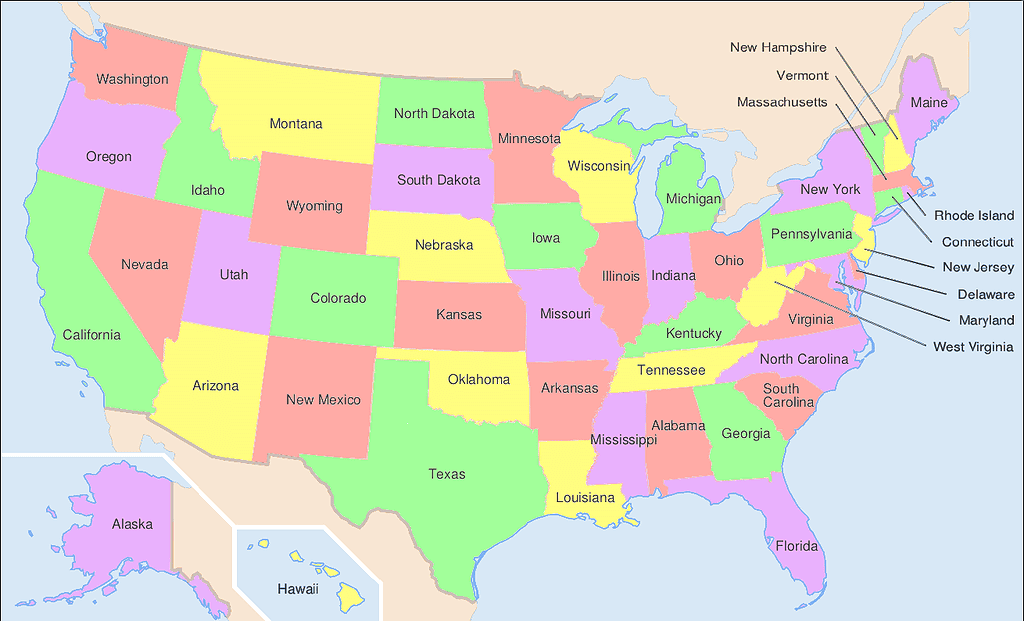
If you drove from the coast of Maine to the coast of Washington State and then turned around and drove back again, you still wouldn’t have covered the number of miles of Russia’s east-to-west expanse.
©User:Wapcaplet in Inkscape / CC BY-SA 3.0 – License
Asia and Europe
Russia’s vast expanse covers much of Eastern Europe and all of Northern Asia. Around 60% of Russia’s land is in Asia, making it the largest Asian country. The remaining 40% of Russian territory is in Europe, which also qualifies it as the largest European nation.
Russia’s Time Zones
There are eleven time zones in Russia. The United States also has eleven time zones when including all U.S. territories.
Surprisingly, there is one nation that has even more time zones than that. France has 12 time zones, more than any other country, even though it ranks 49th among all nations in terms of total land mass. France has territories (or departments) all over the world, including in East Africa, South America, and the Caribbean. That explains why France has 12 different time zones. And, if you count the territory that France has claimed in Antarctica, the time zone count jumps to 13.
Russia’s Borders
The internationally recognized border of Russia spans 13,923 miles. It has the second-longest land border in the world, trailing only China.
Russia shares land borders with 14 other countries, more than any other nation in the world. The border with North Korea is Russia’s shortest land border, stretching just over 10 miles. Russia’s longest land border is shared with Kazakhstan, stretching 4,668 miles.
Other nations that share land borders with Russia include Azerbaijan, Belarus, China, Estonia, Finland, Georgia, Latvia, Lithuania, Mongolia, Norway, Poland, and Ukraine.
Russia also shares maritime borders with Japan and the United States.

This is the standard Russian border marker.
©Ericmetro / Public domain – License
The Bering Strait
The Bering Strait marks the maritime boundary between Russia and the United States. Mainland Russia and the U.S. state of Alaska are only separated by 53 miles. However, there are islands belonging to the two nations that are much closer than that.
The Diomede Islands are two islands in the middle of the Bering Strait. Big Diomede Island is part of Russia, while Little Diomede Island is part of Alaska. The islands are only separated by 2.4 miles.
Russia and the United States are less than three miles apart in this location.
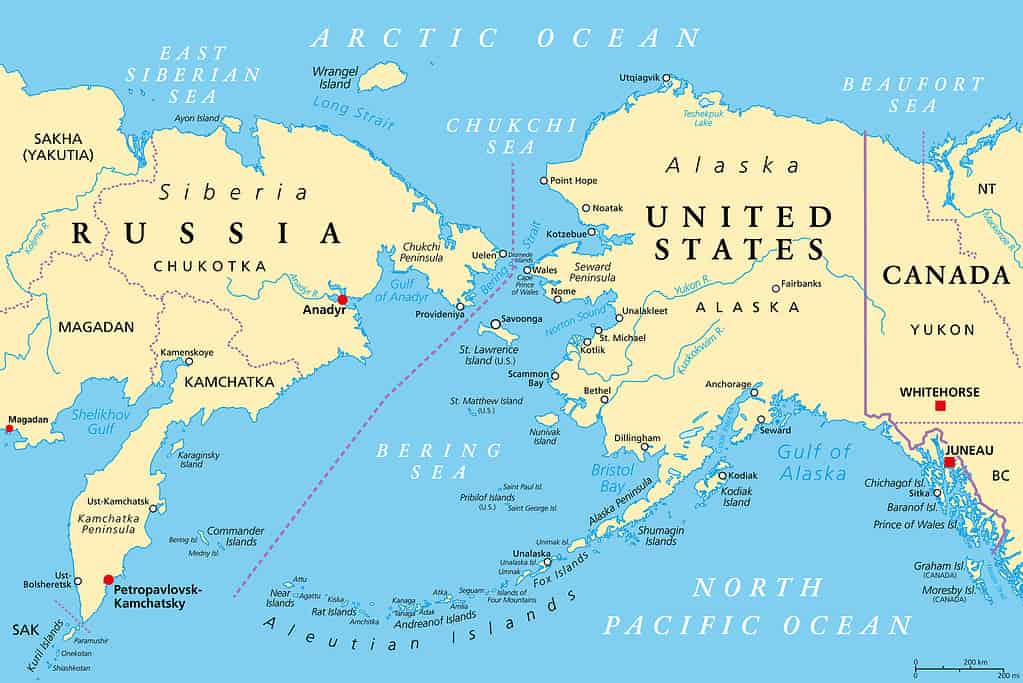
The Bering Strait which forms the maritime boundary between Russia and the United States is just over 50 miles wide.
©PeterHermesFurian/ via Getty Images
Russia’s Population
Russia is the largest nation on Earth by land area, but it is only the ninth most populous country with 143.4 million people. China, India, the United States, Indonesia, Pakistan, Nigeria, Brazil, and Bangladesh all have larger populations than Russia.
The United States’ population is nearly 2.5 times larger than Russia’s. China, the world’s most populous country, has a population almost ten times that of Russia.
Russia accounts for less than two percent of the world’s total population. Much of Russia’s land features an arctic climate. Permafrost covers nearly 65% of Russia’s territory, creating an environment that supports an understandably sparse human population. Siberia makes up 77% of Russia’s total land area but only supports 20% of the nation’s total population.
Not surprisingly, Russia has one of the lowest population densities of any nation. Population density is measured by the number of people per square mile or square kilometer. Russia’s population density is only 21 people per square mile.
Canada, the world’s second-largest nation, has an even lower population density of just ten people per square mile.
The United States has a population density of 91 people per square mile.
Monaco is the second smallest sovereign state in the world behind Vatican City, but it is also the most densely populated, with 49,230 people per square mile.
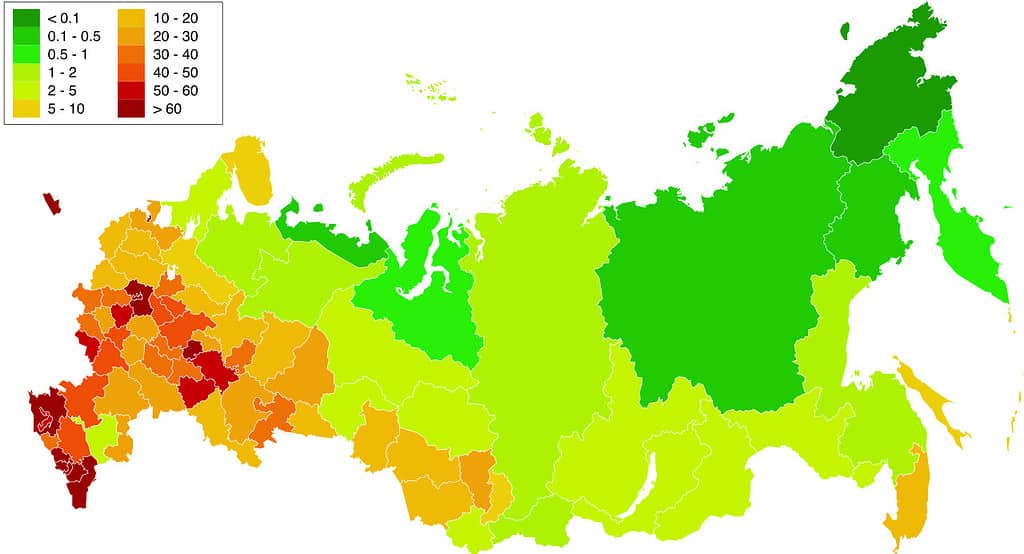
Much of Russia has an extraordinarily low population density, as seen on this map.
©Kolya Yanchiy / CC BY-SA 4.0 – License
Russian Cities
Moscow is Russia’s capital and largest city, with a population of over 13 million.
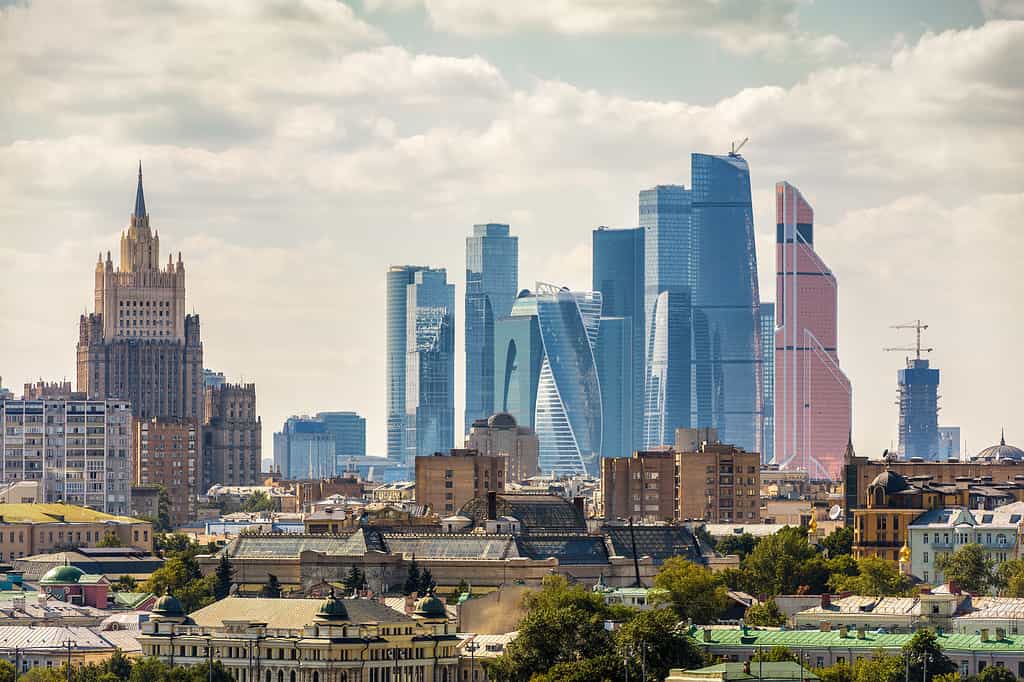
About ten percent of the entire Russian population lives in Moscow.
©scaliger/ via Getty Images
St. Petersburg is the nation’s second most populous city, with 5.6 million residents.
Russia has 16 cities with populations over one million, and they are all located in the west and southwest regions of the country.
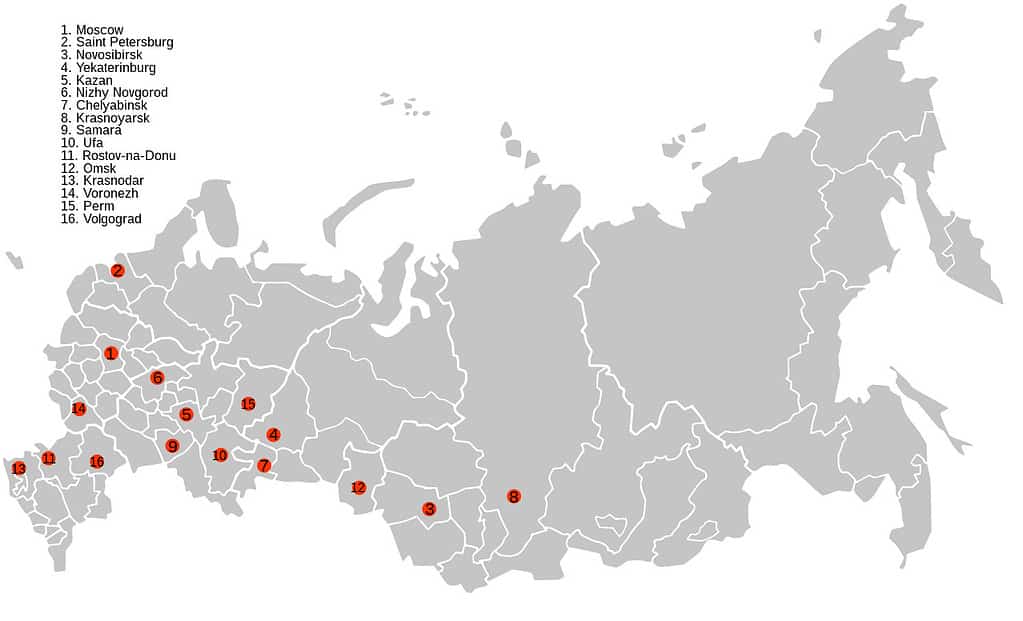
This map shows the location of all Russian cities with populations over one million people.
©Weaveravel / CC BY-SA 4.0 – License
Fun Facts About Russia
Russia’s official name is the Russian Federation. It was formed in 1991 after the dissolution of the Soviet Union.
Russia is home to the oldest and deepest freshwater lake in the world. Lake Baikal was formed some 20-25 million years ago. It features a maximum depth of over one mile, or 5,387 feet to be exact. It is the largest freshwater lake by volume on Earth, holding more water than the five Great Lakes combined. Almost one-fifth of the planet’s freshwater is found in Lake Baikal.
Russia has shores on three oceans: the Atlantic, Pacific, and Arctic Oceans.
There are over 100,000 rivers in Russia, including the longest river in Europe. The Volga River flows for 2,194 miles through Central and Southern Russia before emptying into the Caspian Sea.
The Eurasian brown bear is the national animal of Russia. It is also the national animal symbol of Finland and Croatia. Other large predators in Russia include the Siberian tiger, polar bear, and snow leopard.
Russia’s Trans-Siberian Railway is the longest single railway in the world, traveling 5,772 miles from Moscow to Vladivostok. The rail line crosses eight time zones and 16 rivers, including the Volga River. The railway traverses through 87 towns and cities.
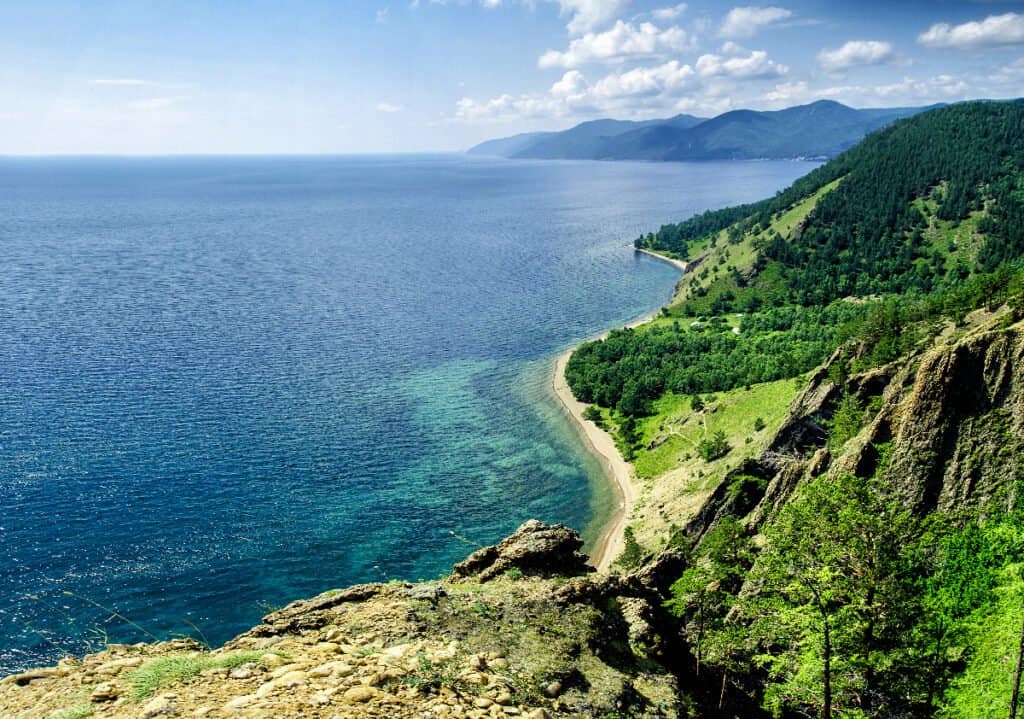
Lake Baikal is the deepest freshwater lake, as well as the largest by volume in the world.
©Julia Kuzenkova/Shutterstock.com
The photo featured at the top of this post is © TUBS / CC BY-SA 3.0 – License / Original
Thank you for reading! Have some feedback for us? Contact the AZ Animals editorial team.







